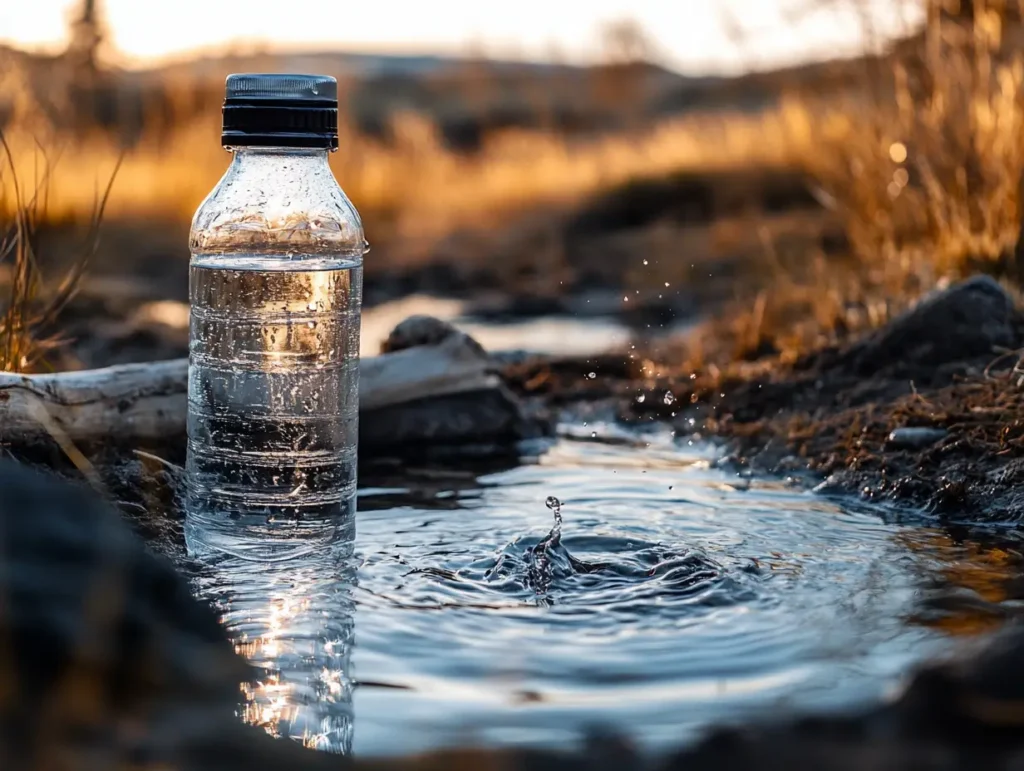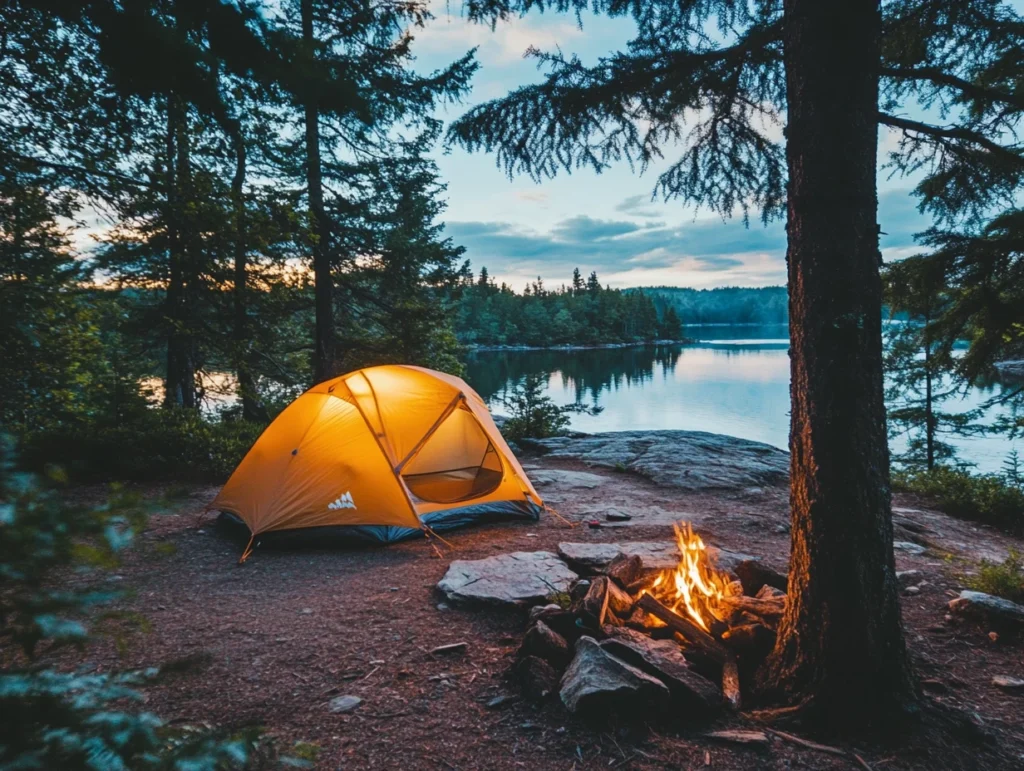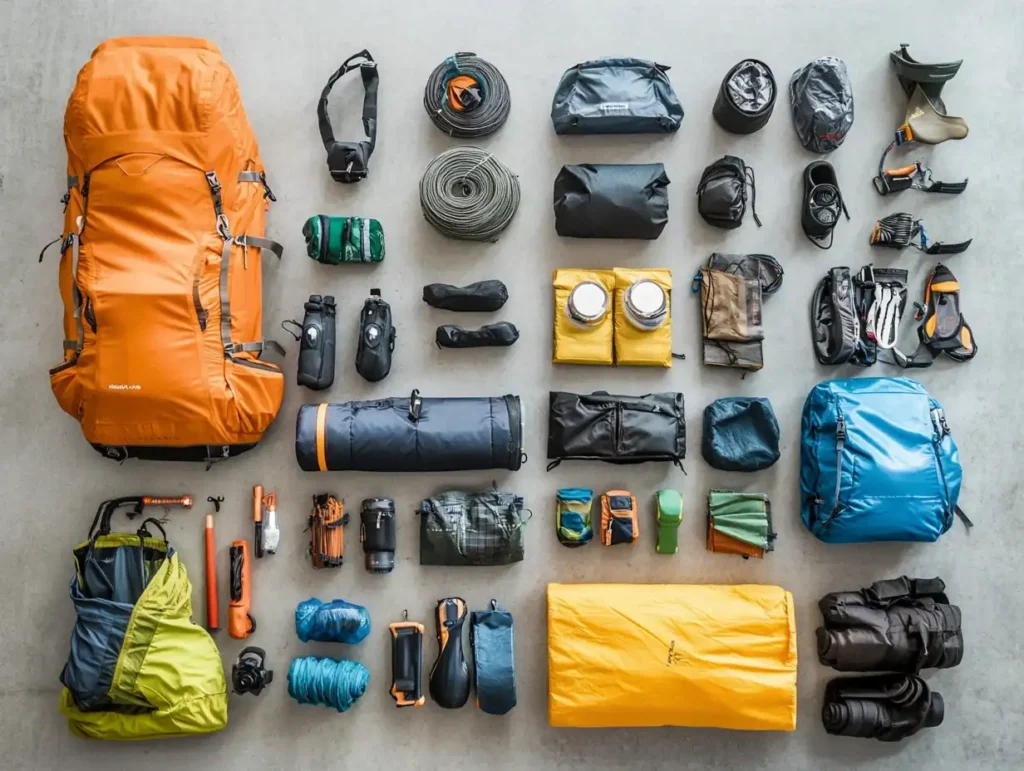Imagine this: You’re deep in the backcountry, surrounded by breathtaking views, when suddenly you realise your water bottle is empty. Yikes! Did you know that drinking untreated water in the wilderness can lead to serious illnesses like giardiasis or cryptosporidiosis?
Talk about a campout catastrophe! But don’t worry, fellow adventurers – I’ve got your back. As someone who’s learned the hard way (let’s just say I’ve had my fair share of close calls with beaver fever), I’m here to share everything you need to know about wilderness water purification. So grab your canteen, and let’s dive in!
Table of Contents
Water Dangers Lurking in the Wild: Know Your Enemy
Filter Your Way to Safety: Top 5 Methods Explained
Chemical Treatments: Quick Fixes for Clean H2O
Boiling Basics: The Fool-Proof Purification Method
Nature’s Purifiers: DIY Water Cleaning Tricks
Choose Your Weapon: Matching Methods to Your Adventure
Maintain Your Lifeline: Caring for Your Water Purification Gear
Quench Your Thirst Safely: Your Wilderness Water Wisdom Recap
Water Dangers Lurking in the Wild: Know Your Enemy
Before we get into the nitty-gritty of purifying water, let’s talk about why it’s so darn important. Trust me, you don’t want to learn this lesson the hard way like I did on my first solo backpacking trip. Ugh, I still get queasy thinking about it!
Finding clean water in the wilderness isn’t always as easy as spotting a babbling brook. Even the most crystal-clear stream can be water contaminated with invisible nasties. It’s like a microbial minefield out there!
When you’re out in the wilderness, water sources can be contaminated with all sorts of nasties:
- Bacteria (like E. coli)
- Protozoa (Giardia and Cryptosporidium – the culprits behind my misadventure)
- Viruses (hepatitis A, anyone?)
- Chemicals (pesticides and other human-made pollutants)
These contaminants can cause a range of waterborne illnesses, from mild stomach upset to severe dehydration and even life-threatening conditions. And let me tell you, nothing ruins a camping trip faster than spending more time squatting behind a bush than enjoying the great outdoors!
The quality of water can vary depending on your environment. High mountain streams might seem pristine, but even they can harbour harmful microorganisms. Lakes and rivers in forested areas often contain more organic matter, which can affect both taste and safety.
And don’t get me started on water sources near human activity – they’re a whole other ball game!
Filter Your Way to Safety: Top 5 Wilderness Water Purification Methods
Alright, now that I’ve thoroughly grossed you out (sorry, not sorry – it’s for your own good!), let’s talk about how to make that wilderness water safe to drink. First up: filtration methods!
- Pump Filters: These bad boys are like the workhorses of water purification. I remember my first pump filter – it felt like I was training for an arm-wrestling competition every time I used it! But man, was it effective. Pump filters work by forcing water through a series of microscopic pores, trapping harmful bacteria and protozoa. They’re great for groups or when you need to purify large amounts of water.
- Gravity Filters: If you’re like me and prefer to let gravity do the work (hey, I’m on vacation, right?), then gravity filters are your new best friend. These systems use – you guessed it – gravity to pull water through a filter. They’re very useful for base camp. You can set them up and let them do their job while you focus on more important things, like learning how to make s’mores.
- Straw Filters: Talk about a game-changer! Straw filters let you drink directly from a water source. They’re lightweight and perfect for day hikes or emergency kits. I used one to drink from a muddy puddle during a hard hike. It wasn’t my best moment, but it kept me hydrated.
- Squeeze Filters: These versatile little gadgets are my go-to for backpacking trips. They’re lightweight, easy to use, and can be attached directly to water bottles or hydration bladders. Plus, they double as filters for cooking – two birds, one stone!
- Bottle Filters: For the ultimate in convenience, bottle filters combine a water bottle with a built-in filter. They’re perfect for hikers who want a simple, all-in-one solution. Just scoop, cap, and sip!
Before you can filter, you need to know the basics of collecting water. Pro tip: Look for moving water when possible, and try to collect from the surface rather than disturbing the sediment.
And please, for the love of all that’s holy, don’t be that person who contaminates the water source by traipsing through it!
Chemical Treatments: Quick Fixes for Clean H2O
Sometimes, lugging around a filter just isn’t practical. That’s where chemical treatments come in handy. They’re lightweight, easy to use, and can be a real lifesaver in a pinch.
- Iodine Tablets: The OG of water purification! Iodine tablets are effective against most bacteria and viruses. The downside? They can leave a weird taste in your water. Pro tip: I always pack some powdered drink mix to mask the flavour.
- Chlorine Dioxide: This is my personal favourite chemical treatment. It’s effective against a wider range of pathogens than iodine, including the notoriously tough Cryptosporidium. Plus, it doesn’t leave much of an aftertaste. Win-win!
- UV Light Purifiers: These high-tech gadgets use ultraviolet light to zap harmful microorganisms. They’re quick and easy to use, but they do require batteries, so make sure you pack spares!
When comparing chemical treatments, consider factors like taste, effectiveness, and wait time. Some work in as little as 15 minutes, while others might require up to 4 hours to fully purify your water.
Chemical treatments are all about transforming sketchy water to make it safe for drinking. Whether you prefer tablets or drops, these little miracle workers can be a real game-changer when you’re miles from the nearest tap.
Boiling Basics: The Fool-Proof Purification Method
When in doubt, boil it out! Boiling is the most reliable method for making water safe to drink. It’s effective against all waterborne pathogens, regardless of water quality. However, there are a few things to keep in mind:
- At sea level, water should be brought to a rolling boil for 1 minute.
- At higher altitudes (above 6,500 feet), increase the boiling time to 3 minutes to compensate for the lower boiling point.
The main drawback of boiling is that it requires fuel and time. It’s not always practical when you’re on the move or in a survival situation. Plus, it doesn’t remove chemical contaminants or improve the taste of the water.
To maximise safety, I often combine boiling with other methods. For example, I’ll filter the water first to remove larger particles, then boil it to ensure it’s 100% safe to drink.
Boiling is like the superhero of water purification – it swoops in to save the day when all else fails. Sure, it doesn’t make your water taste like it’s from a mountain spring, but it’ll definitely make it safe to gulp down without fear of turning your tent into an emergency bathroom!
Nature’s Purifiers: DIY Water Cleaning Tricks
Sometimes, you might find yourself in a situation where you don’t have any fancy gear or chemical treatments. Don’t panic! There are several natural methods you can use to purify water in the wild:
- Solar Water Disinfection (SODIS): This method uses the power of the sun to purify water. Simply fill a clear plastic bottle with water and leave it in direct sunlight for at least six hours (or two days if it’s cloudy). The UV rays will kill most harmful microorganisms.
- Charcoal Filtration: You can make a DIY filter using layers of charcoal, sand, and gravel. It won’t remove all contaminants, but it can help improve the taste and clarity of the water.
- Plant-Based Purification: Some plants, like moringa seeds, have natural water-purifying properties. Crushed moringa seeds can help clarify and purify water, although this method isn’t as reliable as others.
- Distillation: In a true survival situation, you can create a solar still to collect and purify water. It’s a slow process, but it can be a lifesaver in extreme conditions.
Choose Your Weapon: Matching Methods to Your Adventure
So, with all these options, how do you choose the right method for your trip? Here are some factors to consider:
- Trip duration: For short trips, chemical treatments or portable filters might be enough. For longer expeditions, a more robust system like a pump filter or gravity filter might be better.
- Group size: Larger groups might benefit from gravity filters or pump filters that can process more water quickly.
- Water sources: If you’re unsure about the quality of water sources, consider using a multi-stage purification system.
- Weight considerations: Ultralight backpackers might prefer chemical treatments or lightweight filters.
- Personal preference: Some people can’t stand the taste of chemically treated water, while others find pumping filters tedious.
I usually recommend combining methods for comprehensive protection. For example, use a filter for larger particles and protozoa, followed by chemical treatment for viruses.
Maintain Your Lifeline: Caring for Your Water Purification Gear
Taking care of your water purification gear is crucial for its effectiveness and longevity. Here are some tips:
- Clean your filters regularly according to the manufacturer’s instructions.
- Store chemical treatments in a cool, dry place and check expiration dates.
- If your filter freezes, it could be damaged. Always keep it close to your body in cold weather.
- Regularly inspect your equipment for wear and tear.
- Replace filters or equipment when they reach the end of their lifespan.
Quench Your Thirst Safely: Your Wilderness Water Wisdom Recap
Whew! We’ve covered a lot of ground, haven’t we? From the risks of drinking contaminated water to the various methods of making it safe. You’re now armed with the knowledge to stay hydrated and healthy on your outdoor adventures.
Whether you’re filtering, treating, or boiling, the goal is always the same: turning potentially risky wilderness water into clean, safe, thirst-quenching goodness. Your future self (and your gut) will thank you for taking the time to purify. Now go forth and hydrate responsibly!
So, fellow adventurers, what’s your go-to method for purifying water in the wild? Have you had any close calls with waterborne illnesses? Share your stories and tips with me on social media – I’d love to hear from you!
Stay safe, stay hydrated, and happy trails!




Pingback: Complete Guide to Solo Camping Guide [2024] | WBHawkins